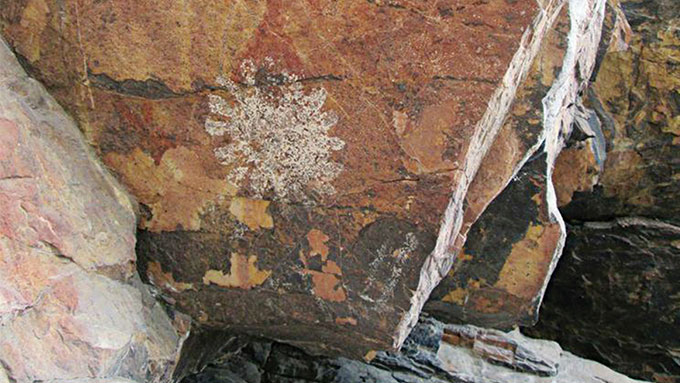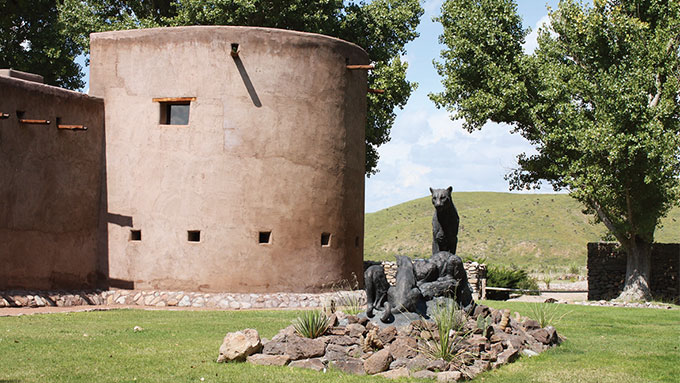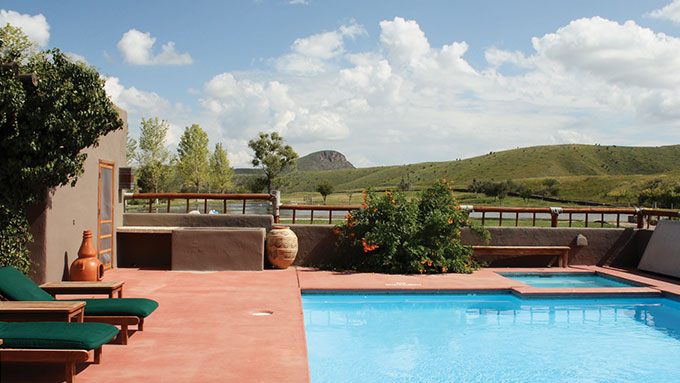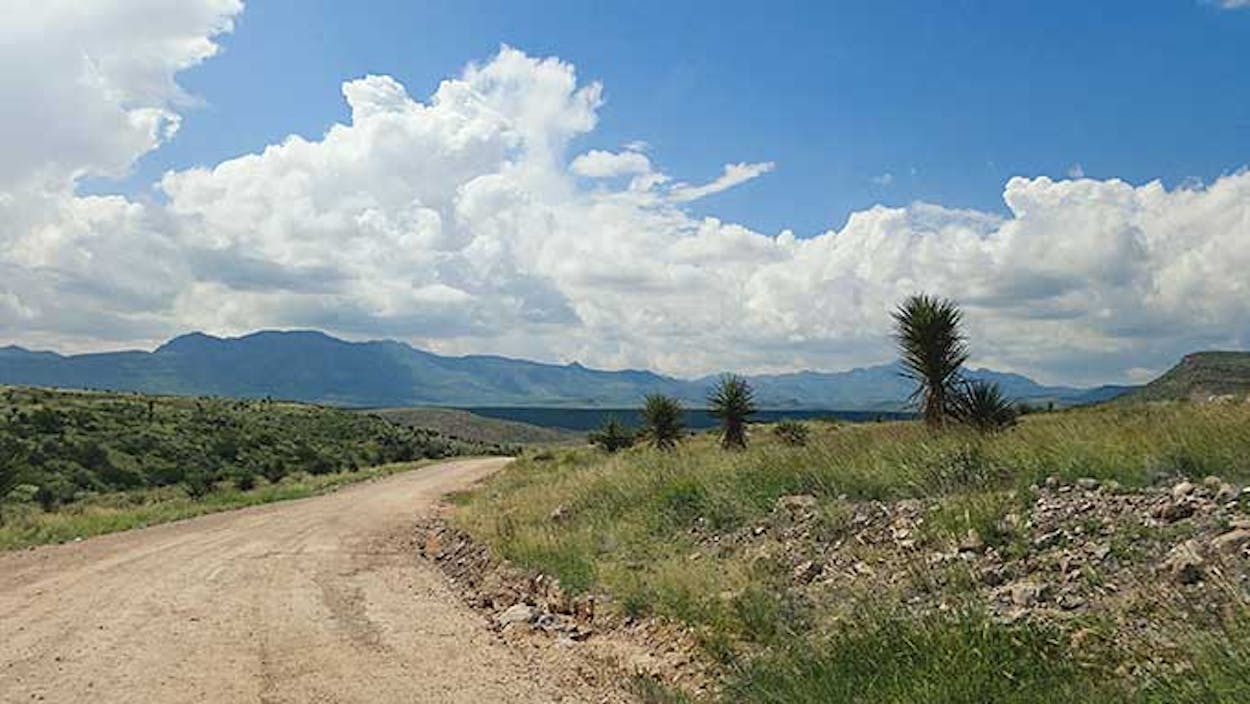Dear John,
I hope you don’t mind my addressing you so informally, Mr. Poindexter. We’ve never met, though we nearly crossed paths in September at your stunning West Texas homestead, Cibolo Creek Ranch, 33 miles south of Marfa. You had just left, presumably headed back to business in Houston, when my friend and I turned off U.S. 67 and made the ethereal twenty-minute drive from your resort’s entrance to its main hacienda. As we traversed the verdant hills studded with Spanish dagger and cacti, past an emerald carpet of alfalfa and over the dry creek’s rocky bottom, I felt like a video gamer who’d finally advanced to a new world. And then, there at the foot of the jagged Chinati peaks was El Cibolo, the largest of the three historic forts on your property and our home for the next two days.
As eager as kids arriving at summer camp, we gave our spartan room a once-over (corner fireplace, deep leather easy chair, sturdy wooden bed with 600-thread-count sheets—lovely) and set off to explore our new habitat. We wandered over to the pool, through the rose garden by the pond, and dipped our hands into the cool springwater burbling through the rock-lined acequias.

(Cibolo’s “lake.”)
I felt completely uncorralled. Mornings and evenings, we’d slip down the tree-shaded gravel path toward the springs, invariably encountering forty or so snorting buffalo (or cibolo, as the Spanish called them). One afternoon, a Humvee ferried us 1,600 feet up the Chinati Mountains to scavenge for crystals and geodes, stopping along the way to see a waterfall and inspect primitive stick figures that previous tenants had painted onto the limestone cliffs eons ago.
I’d underestimated the pull of history here. I’m sure Milton Faver, the original landowner and the county’s first cattle baron, would appreciate the millions you poured into painstakingly re-creating the three thick-walled adobe forts he built in the 1850’s to defend his holdings. Cibolo is clearly a labor of love, not profit.

(One of the museums with artifacts excavated from the area.)
Thank you, then, for welcoming total strangers like us to your impressive spread, thirty thousand acres of Texas we otherwise wouldn’t have been able to roam—at least not without risking a trespassing citation. Granted, we were paying for the privilege—we’d booked a $395 room with a queen-size bed, the next-to-cheapest option—but, having long read the breathless accounts in Architectural Digest and National Geographic Traveler of folks like Mick Jagger and Julia Roberts and Tommy Lee Jones coming to luxuriate in the simple pleasures of horseback rides and steak dinners and priceless tranquillity, we were excited for the splurge.

(A stick-figure pictograph.)
And perhaps buying into that hype is what set me up for such disappointment. Now, I admit that a hazard of being a travel writer is catching a chronic case of hypersensitivity to details. After checking in to more than seventy hotels and B&Bs in Texas in the past few years, I’ve developed a neurotic checklist of questions that distinguish good places from great ones: How long was I placed on hold while making the reservation? (In Cibolo’s case, 5 minutes and 31 seconds.) Upon arrival, were we asked if we needed help with our bags? (No.) Were there hairs in the tub? (No.) Did I have to crawl under the bed or move furniture to plug in my phone? (No. The power strip was a nice touch.) And then there are the bigger questions: Was everything as advertised? Was the staff friendly and eager to please? And, simply, was there an obvious pride taken in the upkeep of the place?
At Cibolo, the answers to those questions were mixed. After our attempt to hike to a couple of the ranch’s springs was thwarted by a locked gate, we alerted the staff, only to have our disappointment brushed off with an “Oh, well, it was open yesterday.” And as for those resident buffalo, one employee assured us that they were harmless; another warned us later that the bulls might charge (yes, I’m aware we’d signed a liability waiver).

(Buffalo roaming the ranch.)
On our second afternoon, we took a self-guided tour of the smaller forts on the other side of the highway. Our comfortable courtyard room at El Cibolo, though a vault of quietude, was a nightclub compared with the silence and stillness that enveloped us at La Ciénega and the electricity-free La Morita, with its propane stove and oil lamps. They’re two of the coolest, remotest places in Texas to stay, but they weren’t exactly ready for guests. At La Ciénega, the scent of eau de guano led me to a scattering of scat (bat? mouse?) on some bath towels next to a half-eaten bar of Aveda soap. At the single-occupancy La Morita, I nearly disturbed a particularly primordial-looking lizard—a skink!—that was playing dead in the sink. When we returned to El Cibolo, I mentioned the fellow to the property manager and three staffers who were all enjoying a smoke break in the fort’s entryway. “That thing’s still in there?” Sure was.

(Part of El Cibolo.)
But it was the food that was the farthest off the mark. Since we didn’t want to go “off campus,” we opted for the $75 daily meal plan. What’s billed online as “international gourmet meals based on ancient Mexican cooking traditions” seemed to require no more culinary expertise than what was served in my college cafeteria: fajita meat in mass-produced taco shells, slices of semi-thawed cheesecake, the same appetizers (chips, salsa, guacamole, and recently frozen breaded shrimp and chicken nuggets) served every evening. With no bar or cocktail menu in sight, I took a stab and requested a margarita since we’d read about Cibolo’s signature prickly pear version in the guest room literature. What I got was a puzzled look and a run-of-the-mill concoction. Chatting with fellow guests at the long communal dining table, a retired couple from Michigan who were nearing the end of their week-long stay confided that, while they loved the hikes and ATV excursions, they too felt a little snookered by the food. Their first visit, they said, would likely be their last.

(The pool.)
I realize that expectations are dangerous. But I still had more than a few of them perched in my mind like water balloons on a ledge. I’m sharing these quibbles not because I think you’re an inattentive owner but because I know you’re not. One night, as we roasted marshmallows around the “Texas TV” (your nickname for the fire pit near the pond), the manager mentioned that you keep meticulous lists of the things that need to be done around the place. I’m sure you’re the most exacting guest of us all. And I appreciate the fact that Cibolo’s greatest asset—its prime placement out in the middle of the Chihuahuan Desert—is also its greatest challenge when it comes to running an operation of this complexity.
But the cost of our stay gnawed at me on the long drive back to Austin. Our bill had come to $1,379.06 for two nights in a courtyard room with a queen bed, five meals for two, drinks for two, and a mountain tour for two, plus gratuity. Not itemized, of course, was the opportunity to be fully immersed in such an otherworldly place. That was the experience that we’d really come for. And it’s also the one that you can’t put a price tag on. I just wish the service had been as superlative as the surroundings.
Sincerely,
A Humble Wanderer








